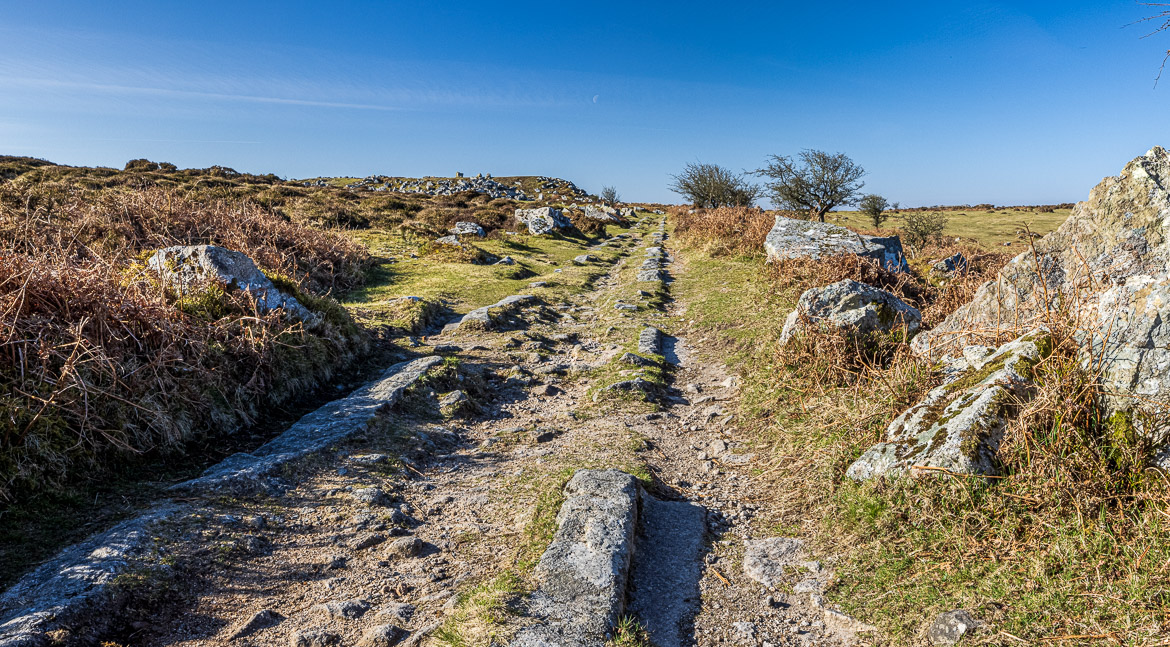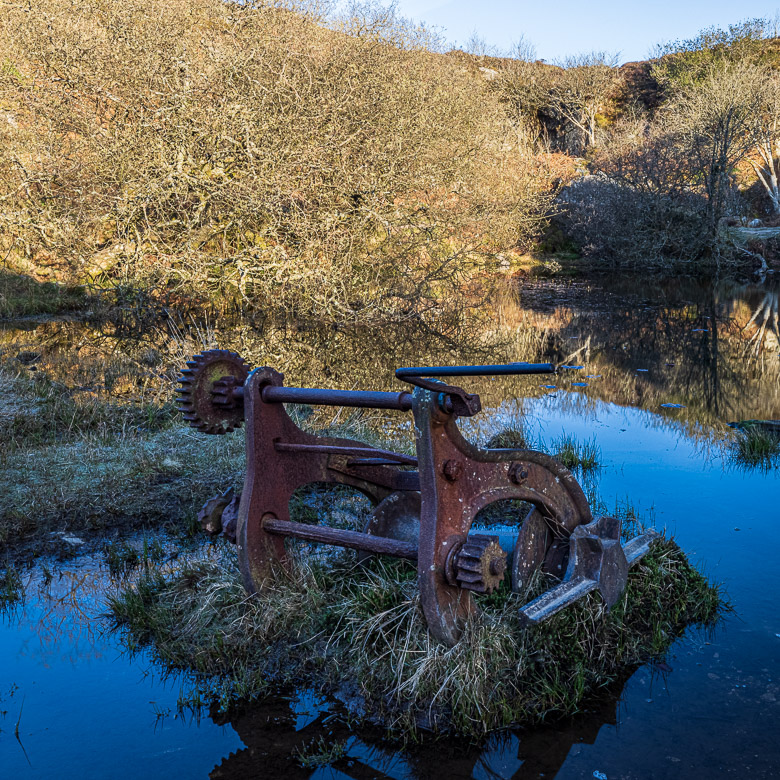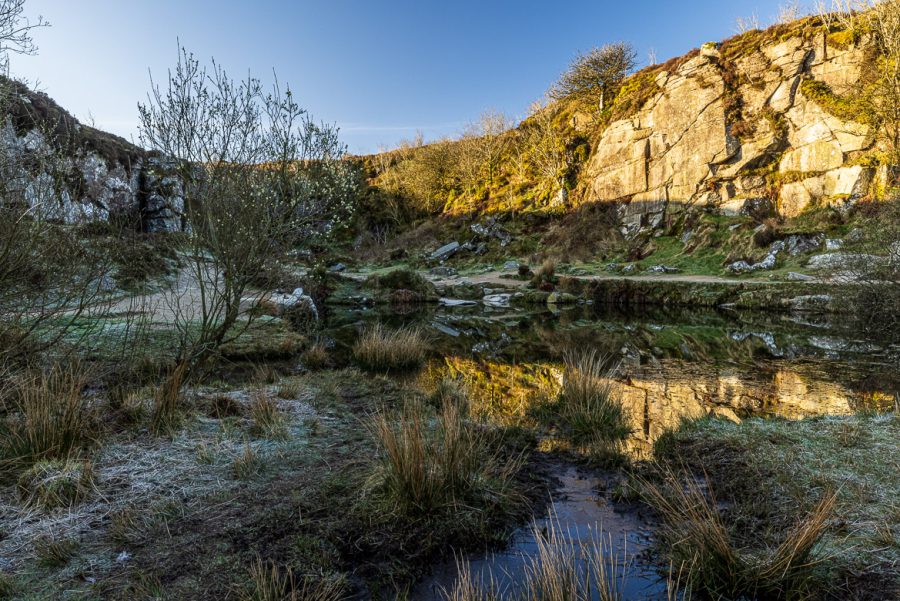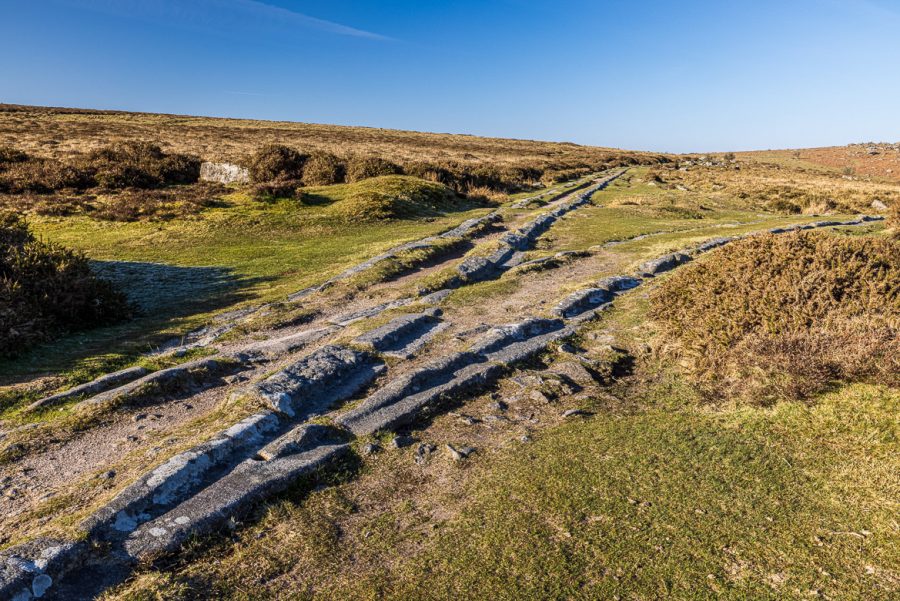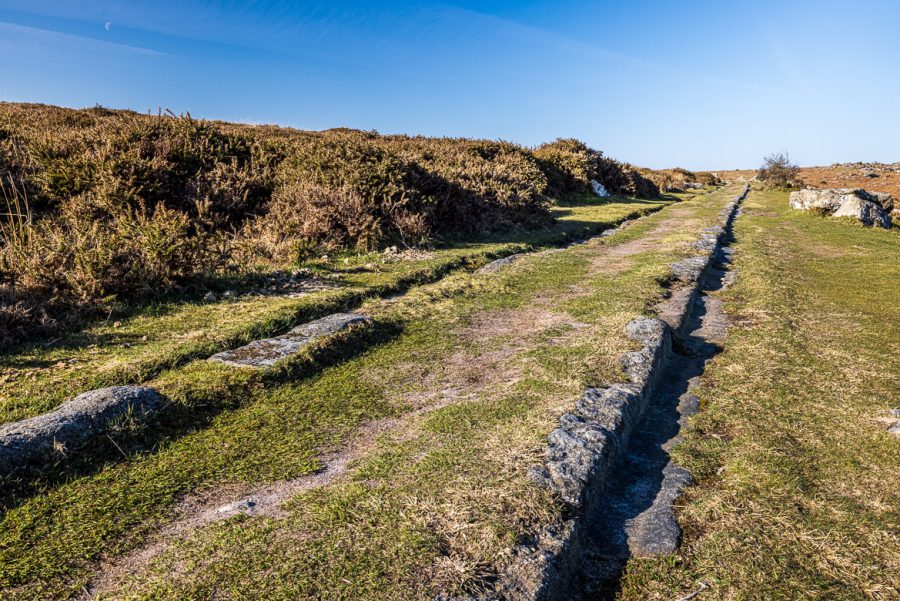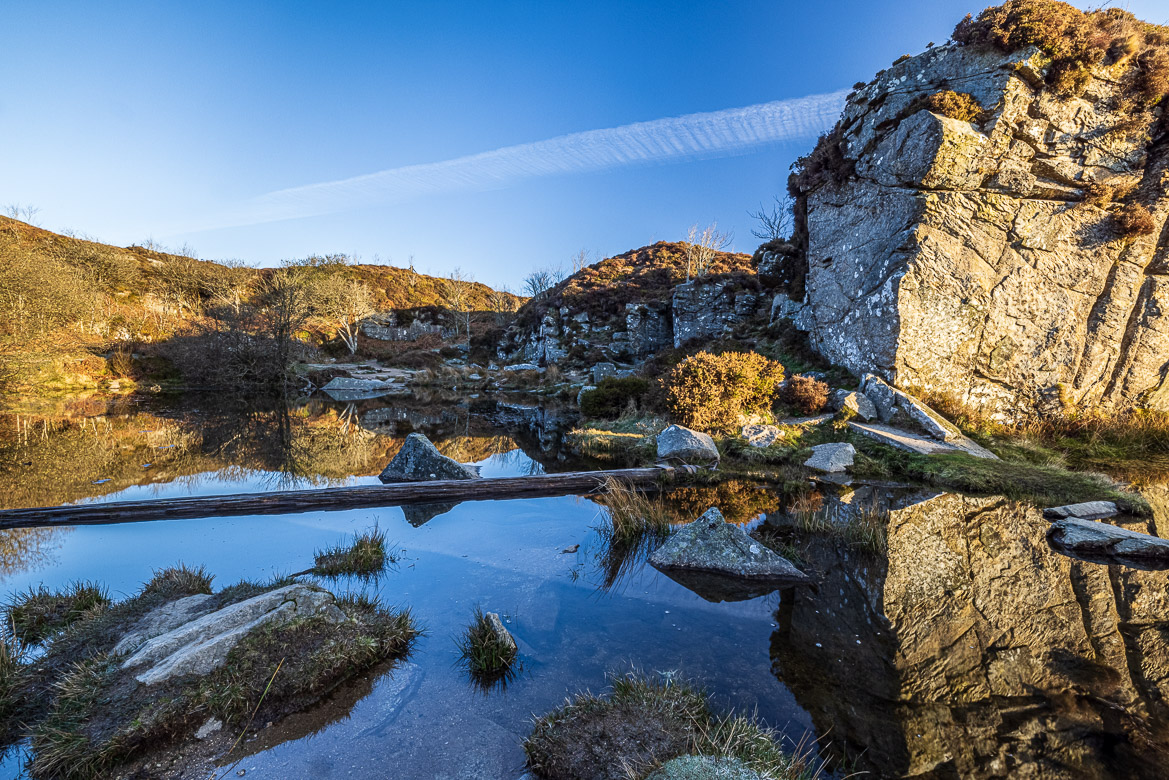
With industrialisation and the development of larger towns and cities the early 19th century was a period with a large need for granite as building material. Dartmoor was built on a massive amount of high-quality granite But the problem was transportation. Haytor belonged to the Stover Estate, owned by the Templer family since the late 18th century.
They also had clay in the Bovey Basin and the high quality of clay was something that potters like Wedgwood wanted. But the transportation was again the problem and the Templers built a canal that opened in 1792. It was only a couple of miles long, but offered the means of transporting ball clay to the mouth of the river Teign. At the end of the century James Templer had secured a major contract with Josiah Wedgwood.
George Templer, the son of James, then found the solution – building a tramway from the quarries to the canal. But it wasn’t to be an ordinary railway. The tracks consisted of granite instead of iron. It became a 9 mile mile long route from the quarries near Haytor down through Dartmoor to the canal near the mouth of river Teign. The tramway was ready in 1820 and the quarries and tramway were in use until around 1850. One of the first assignments was the delivery of the granite for London Bridge (which now has been dismounted and remounted in Arizona!). Haytor granite has also been used for the building of British Museum.
Remains of the old machinery The quarry has now turned into a shallow lake
I walked up alongside Haytor a lovely early April morning to come to the quarry behind Haytor and then follow the tramway for a while. It was frost on the ground, when I started my walk, but before I finished my photography I met joggers in shorts. The tramway has now been converted into a lovely walk across Dartmoor, and it was probably all along used as a footpath. Occasionally a wagon would pass, pulled by horses. And as the loaded wagons were mainly going downhill to the canal, the horses were put behind the tram to break its path down to the coast. They had a mechanical brake on the wagon as well as a back-up.
The walk is called Templer’s Way after the Templer family, who built the tramway.
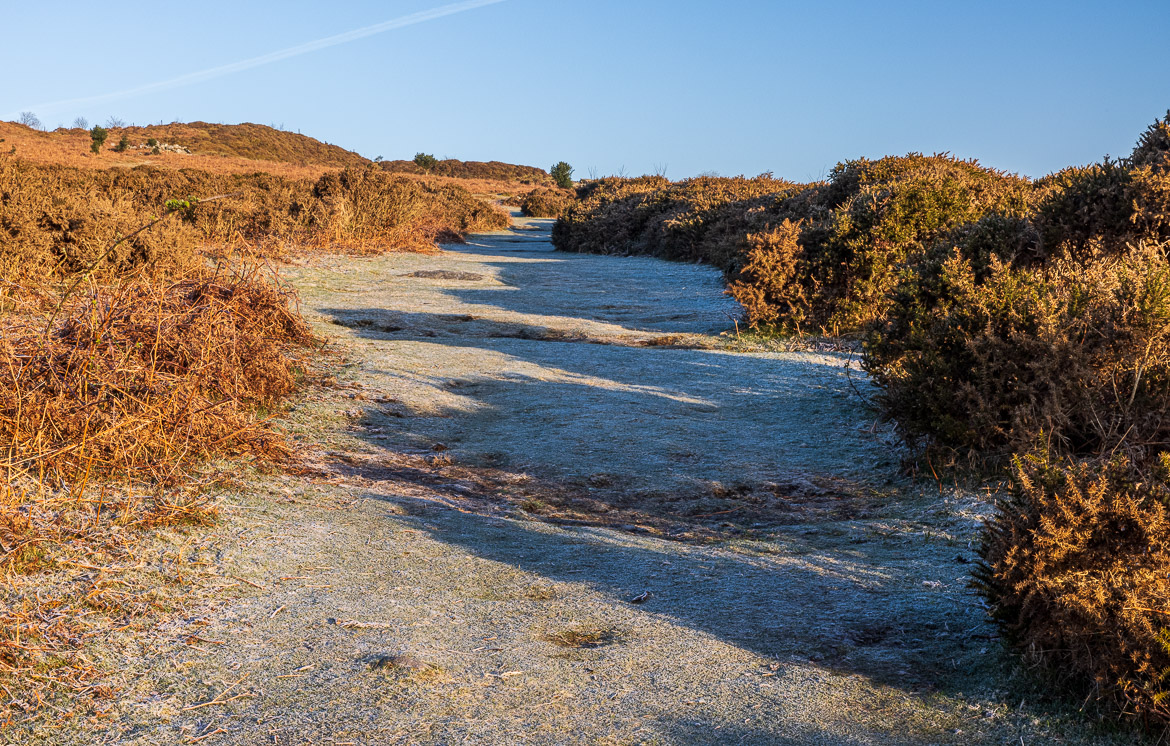
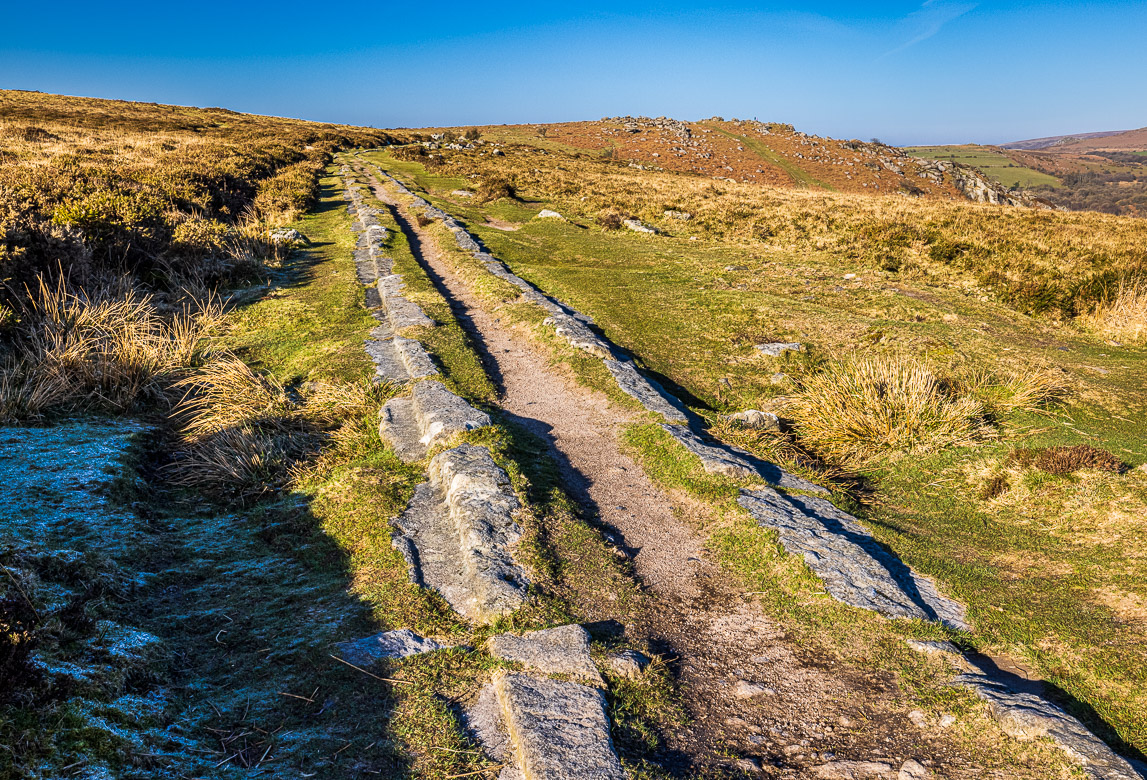
The y could change the wagons into different tracks like a modern railway The track going to another quarry at a little bit higher altitude
